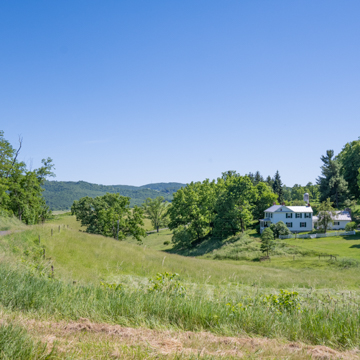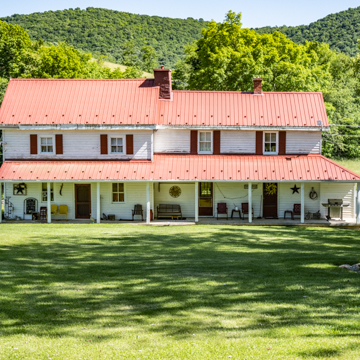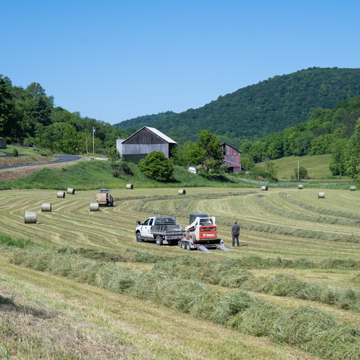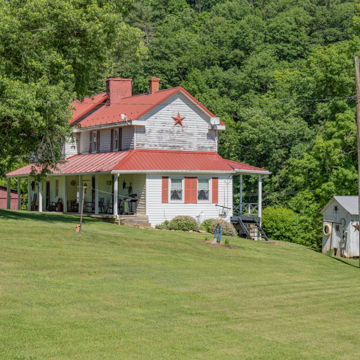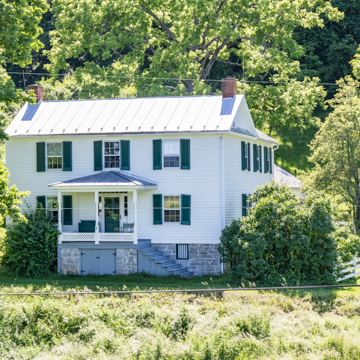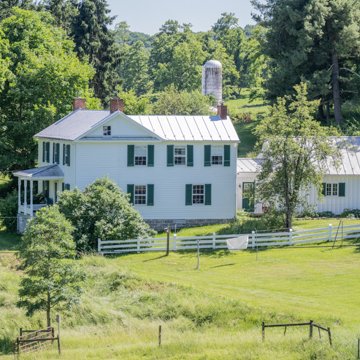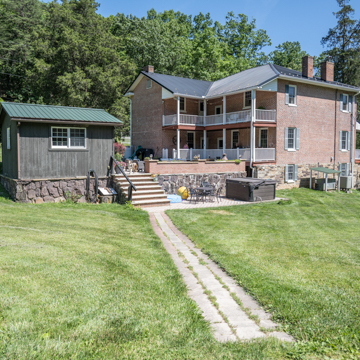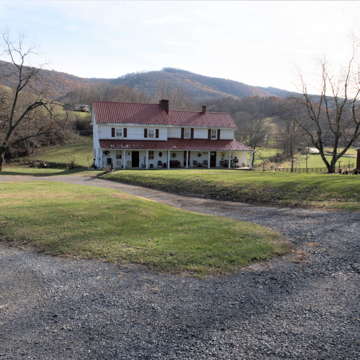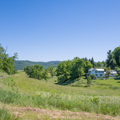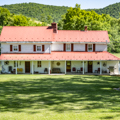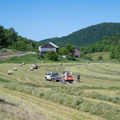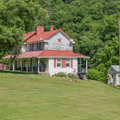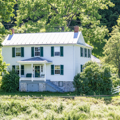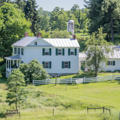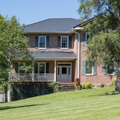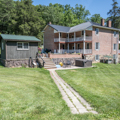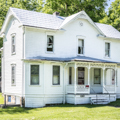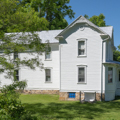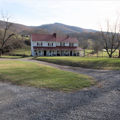Breakneck Valley forms a near-pristine landscape of family farms built within a rolling, picturesque vale flanked by mountain ridges offering spectacular views. The landscape reflects the survival and ongoing use of a pioneering agricultural settlement begun during the last quarter of the eighteenth century. The farms were established by English, Scots-Irish, and French settlers, most of whom migrated from Frederick County, growing wheat, oats, potatoes, and corn. The early houses were of log construction, with the majority now of timber frame, dating from the early to mid-nineteenth century. They were built in a local vernacular to encompass two-story, gable-roof configurations with stone foundations and chimneys, front porches, and rear ells with double galleries. Typical is the oldest remaining log house, the Captain George Robinette House (c. 1790) at 18300 Messick Hollow Lane NE. The Henry A. Jamison House (c. 1842; 10300 Murley’s Branch Road NE) is a small log dwelling with a later timber frame section, and the Moses Robinette House (c. 1835; 18300 Breakneck Road NE) is notably of plank construction. More stylish and of brick construction are the Greek Revival-influenced George Tanner Robinette House (c. 1845; 11507 W. Wilson Road NE) and the five-bay classically styled Rose Hill Farm house (c. 1845; 12301 W. Wilson NE) built by Jeremiah Berry. Balloon-frame, L-shaped farmhouses appeared during the late nineteenth century, of which the Summerfield Hinkle house (1902; Murley’s Branch at Breakneck) is the most intact and elaborate. The farms likewise comprise noteworthy barns, summer kitchens, and other outbuildings.
You are here
BREAKNECK VALLEY
Mid-18th to early 20th centuries. Breakneck Rd. NE, from Messick Hollow Ln. NE to Murley’s Branch Rd. NE
If SAH Archipedia has been useful to you, please consider supporting it.
SAH Archipedia tells the story of the United States through its buildings, landscapes, and cities. This freely available resource empowers the public with authoritative knowledge that deepens their understanding and appreciation of the built environment. But the Society of Architectural Historians, which created SAH Archipedia with University of Virginia Press, needs your support to maintain the high-caliber research, writing, photography, cartography, editing, design, and programming that make SAH Archipedia a trusted online resource available to all who value the history of place, heritage tourism, and learning.


